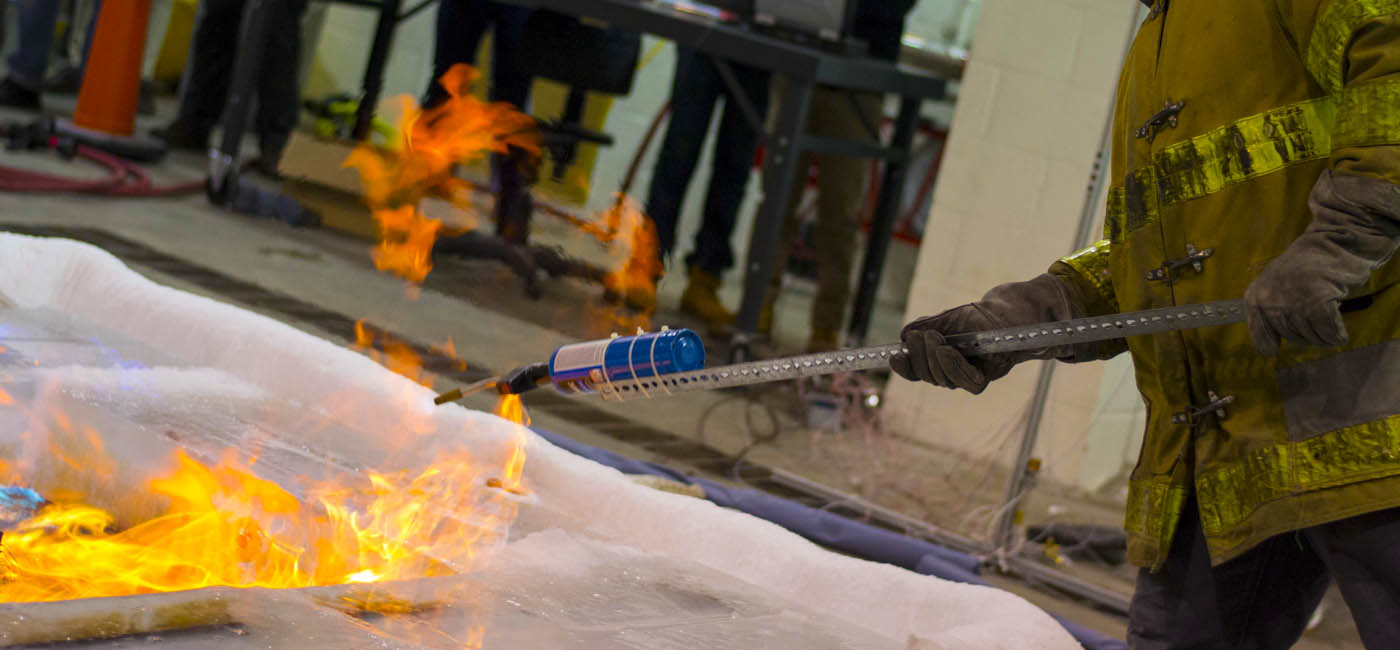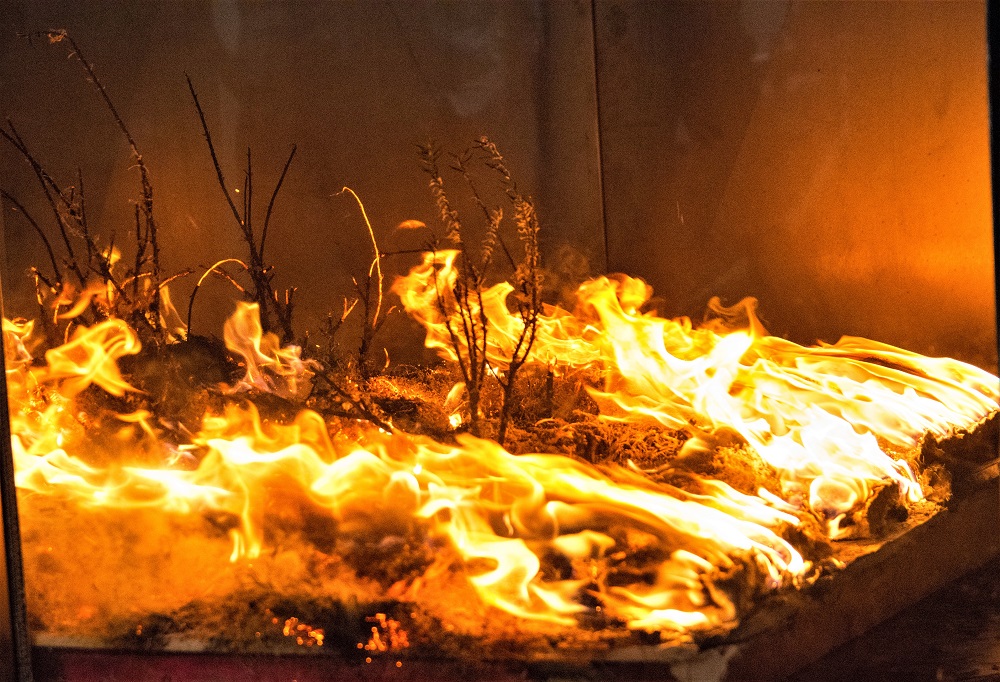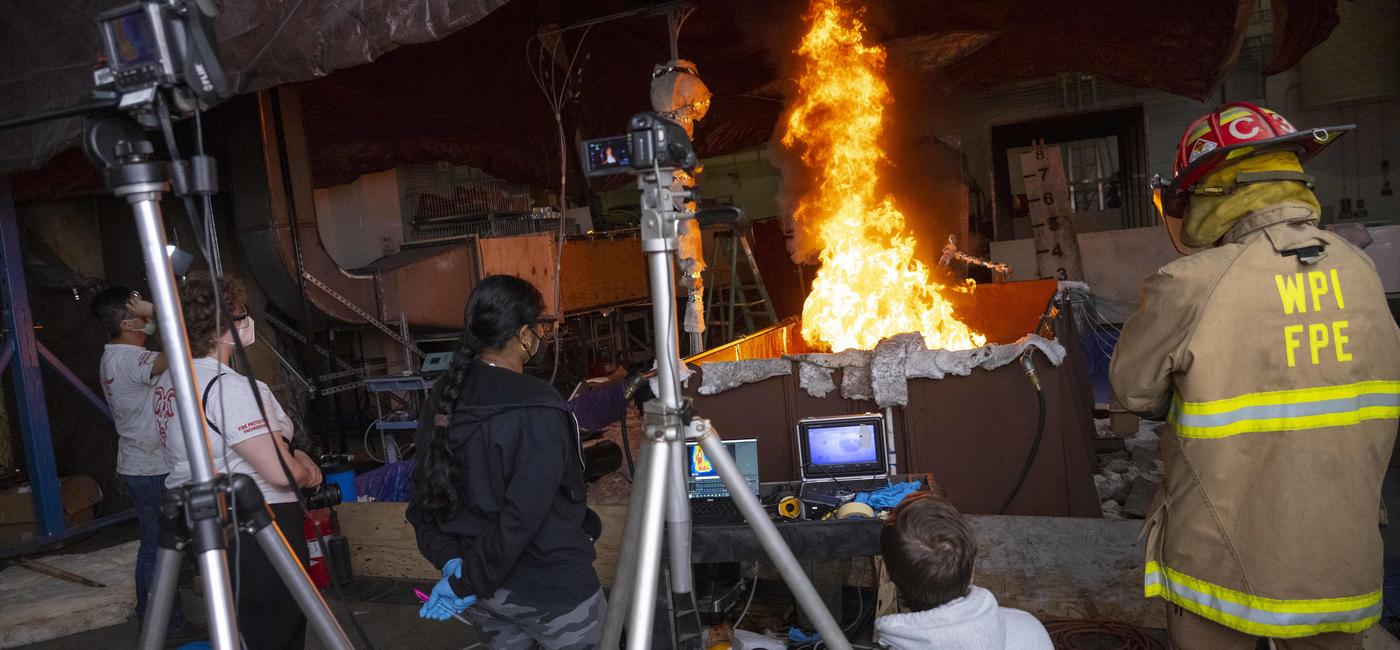With the construction industry adopting a wide array of "green" technologies, materials, and sustainable building practices, a team of fire protection engineering researchers at Worcester Polytechnic Institute (WPI) is investigating the fire safety risks associated with green construction.
The WPI team is working with a $1 million grant from the U.S. Department of Homeland Security, which will fund a three-year project aimed at identifying and reducing the potential for firefighter and occupant injuries and deaths that could be associated with unanticipated hazards posed by green building elements. The funding began in August 2013 and runs through July 2016.
This research will begin to quantify the fire hazards and risks associated with green building features, identify ways to mitigate those hazards and risks, and prepare the fire service to fight fires in buildings with green features and elements. These are all needs identified by the National Association of State Fire Marshals, the Fire Protection Research Foundation, and the National Fire Service Research Agenda, which are especially interested in understanding and addressing how the challenges of green or sustainable buildings impact firefighter safety.
In 2012, Brian Meacham, associate professor of fire protection engineering at WPI, co-authored "Fire Safety Challenges of Green Buildings," a report commissioned by the Fire Protection Research Foundation, the research arm of the National Fire Protection Association. This groundbreaking, comprehensive examination of the impact of sustainable construction techniques and materials on fire safety was the first study to survey the full array of sustainable construction techniques and materials for their fire safety implications.
For the report, Meacham and his team conducted a global literature search and surveyed agencies around the world to assemble a list of 78 green building features and construction elements that could have implications for fire safety. They then derived a list of potential hazards associated with the features and elements, including greater flammability, faster burn rate, and increased hindrance to firefighters, as compared with conventional construction. For example, while lightweight engineered lumber (LEL) uses less material, LEL flooring could present risks to firefighters because of a propensity to collapse under fire conditions more quickly than conventional timber construction. Photovoltaic panels generate green electricity, but a rooftop solar array may pose an ignition hazard, can readily burn once ignited, and may continue to produce electricity as long as the sun is out, posing an electrocution hazard.
The research project funded by Homeland Security will enable Meacham, who is principal investigator, to explore further some of the potential risks and hazards identified in the report. Meacham will work with co-investigators Nicholas Dembsey, professor of fire protection engineering at WPI, and Michael Gollner and Andre Marshall of the University of Maryland, with collaborative support from the Fire Protection Research Foundation, the National Fire Protection Association, and Massachusetts Department of Fire Services.
The researchers will review domestic fire incident data reporting and fire investigation reports in Massachusetts and selected national locations to determine if and how relevant green building data is reported, and investigate how to supplement fire incident data collection to capture pertinent information on sustainable building elements. The collected data will be analyzed to see how green building elements performed against conventional construction.
When quantified data on the fire performance of green building features does not exist, the researchers will fill in the gaps by conducting fire tests and firefighter tactics assessments. One area they will study is green building envelope systems, including structural insulated panels, exterior wall insulation systems, high-performance window glazing systems, and naturally ventilated facades and atria. The data will focus on factors that could increase hazards to firefighters, in such areas as access time, increased fire size, visibility, and toxicity issues associated with smoke conditions, and structural response to fire. New data collection will involve fire performance experiments, computer simulation, and firefighter response and tactics assessments.
The project will also suggest modifications to tactical firefighting for green buildings, the development of education and training material on fire hazards of green buildings, and changes to building codes and standards, where necessary. Working with Massachusetts Department of Fire Services, WPI students will visit fire scenes to collect building data that can be identified as green or sustainable and determine whether it played a role in the fire. Upon completion of the project, the Department of Fire Services will file any recommended amendments to update the state building code, as well as provide support at the national level for code changes in areas deemed to impact firefighter safety.
Fire performance experiments of realistic interior and exterior fire growth scenarios will be conducted in WPI's new Fire Protection Engineering Laboratories at Gateway Park and at the Massachusetts Firefighting Academy in Stow. WPI's Engineering Laboratory is large enough for a two-story mockup to be constructed and burned. The lab's 3-megawatt calorimeter can collect all the smoke from an intermediate scale burn and provide the heat release rate history.
"There's no argument that builders need to create a more sustainably built environment," Meacham said. "However, providing safe environments for building occupants and first responders is equally essential. Through this research we look to identify areas in which sustainable or green building solutions might create fire safety concerns, and then develop data, tools and methods to help reduce the fire risk. Our ultimate goal is to effectively achieve both sustainability and fire safety objectives."




